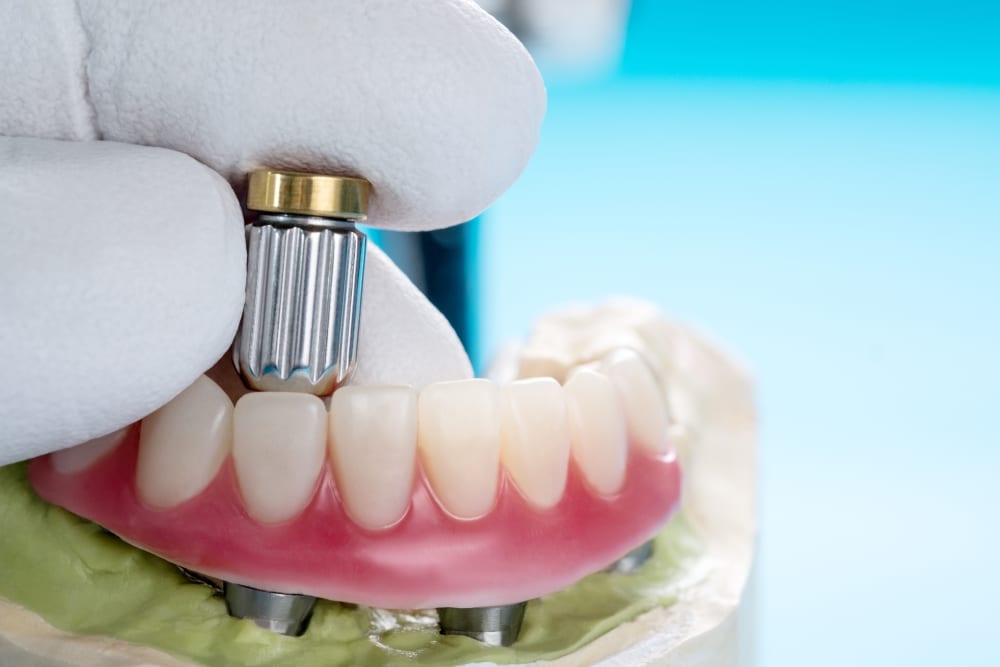
Dentistry has witnessed remarkable advancements, and one notable solution for those with missing teeth is the tooth-supported overdenture. Let’s explore the critical steps involved in crafting these innovative dental prosthetics, shedding light on the distinctions between tooth-supported overdentures, tooth-supported open overdentures, and implant-supported overdentures.
Understanding Tooth Supported Overdenture
A tooth-supported overdenture is a dental prosthetic designed to replace missing teeth while utilizing remaining natural teeth for support. This approach combines the stability of dental implants with the resilience of natural teeth, providing a comfortable and functional solution for those in need.
Tooth Supported Overdenture Steps
1. Comprehensive Examination:
The journey towards a tooth-supported overdenture begins with a thorough examination of the patient’s oral health. This includes assessing the condition of existing teeth, the health of the gums, and overall bone density.
2. Treatment Planning:
A customized treatment plan is formulated based on the examination results. This involves determining which natural teeth will serve as support for the overdenture and evaluating the need for any preparatory dental procedures, such as extractions or root canal treatments.
3. Tooth Preparation:
If certain teeth are identified to provide support for the overdenture, they may undergo preparation. This involves shaping the tooth to accommodate attachments or caps that will connect to the overdenture.
4. Impression Taking:
Precise impressions of the oral structures, including the prepared teeth, are taken. These impressions are crucial for creating a prosthetic that fits snugly and functions seamlessly in the patient’s mouth.
5. Temporary Overdenture:
While the final overdenture is being fabricated, a temporary overdenture may be provided to the patient. This ensures they can maintain functionality and aesthetics during the waiting period.
6. Attachment Placement:
Once the overdenture is ready, attachments or caps are placed on the prepared natural teeth. These attachments secure the overdenture in place, providing stability during daily activities like eating and speaking.
7. Final Fitting and Adjustment:
The completed overdenture is carefully fitted and adjusted to ensure proper alignment, comfort, and functionality. Dentists pay meticulous attention to the patient’s bite to prevent any discomfort or uneven pressure on the supporting teeth.
8. Post-Placement Follow-Up:
Regular follow-up appointments are scheduled to monitor the performance of the tooth-supported overdenture. Any necessary adjustments or refinements are made to address the evolving needs of the patient.
Tooth Supported Open Overdenture
A variation of the tooth-supported overdenture is the tooth-supported open overdenture. In this design, the palate of the overdenture is left open, allowing for a more natural feel and improved taste sensation. This option is often preferred by individuals who find traditional dentures uncomfortable or who have concerns about diminished taste perception.
Implant-Supported Overdenture vs. Overdenture
While tooth-supported overdentures utilize natural teeth for support, implant-supported overdentures rely on dental implants embedded in the jawbone. The choice between the two depends on factors such as oral health, bone density, and patient preference.
Implant-supported overdentures offer increased stability and reduce the load on natural teeth, making them a favorable option for those with sufficient bone density. Tooth-supported overdentures, on the other hand, provide an alternative for individuals with healthy remaining teeth who wish to retain their natural dentition.
In conclusion, the creation of tooth-supported overdentures involves a meticulous process, from initial examination to final fitting. This innovative dental solution combines the strength of natural teeth with the adaptability of prosthetics, offering patients a reliable and comfortable option for restoring their smiles. Understanding the distinctions between tooth-supported overdentures, tooth-supported open overdentures, and implant-supported overdentures allows individuals to make informed decisions about their dental health and well-being.
